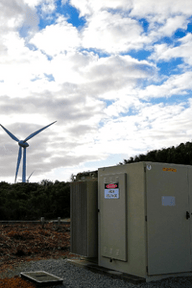Despite the fact that wind turbine and photovoltaic fires can be catastrophic, the clean energy industry has been slow to address fire risk. This lack of foresight is particularly surprising when you consider both the prevalence and the financial cost of fire incidents in the clean energy industry. However, research suggests that the renewables industry is greatly underestimating the level of fire risk it faces.
What is the True Cost of Fire Incidents?
Let’s take a look at some data. On average, you can expect that one in every 2,000 wind turbines will have a catastrophic fire. And these fires can be extremely damaging from a financial perspective. Replacing an individual turbine damaged by fire is becoming increasingly expensive (costing up to $9 million) with 12-18 months of expected revenue loss and down time to get replacement parts.
Meanwhile, statistics show that solar-related fire incidents are increasing as more and more photovoltaic systems are deployed. One data set released by the US Fire Administration (USFA) found that instances of solar system fires more than doubled during the period 2015 to 2018. In addition, data from Fire and Rescue New South Wales (NSW) in Australia has shown that there was a six-fold increase in the number of solar fires attended by firefighters in the period 2018 to 2020.
Why the Clean Energy Sector’s Approach to Fire Risk Needs to Change
So why is the renewables industry failing to adequately address the issue of fire risk? Here are three reasons— and why it needs to change.
- In the wind industry, there is no requirement to conduct a fire risk assessment.
Reducing the risk of injuries to personnel, as well as avoiding fatalities – in addition to limiting damage to assets – should be a priority for all wind farm operators. To achieve these objectives, conducting an effective fire risk assessment is crucial. Unfortunately, there is no requirement to do so. To make matters worse, independent service providers do not, generally speaking, include FRAs in their scope of services. - Wind farm operators often underestimate the cost of replacing a fire-damaged wind turbine.
The cost of replacing only one damaged turbine can be more expensive than anticipated because it is not possible to achieve the “economies of scale” that are gained when, say, adapting roads and building bridges to transport the turbines needed for an entire wind farm. - In the solar industry, it is suspected that fire risk is underreported and therefore underestimated.
A study by the UK’s BRE National Solar Centre – which investigated 80 potential PV-related fire incidents – led to the finding that researchers “strongly suspect a degree of under-reporting, especially amongst solar farms and domestic thermal events that were resolved by a solar installer/ maintenance engineer.” Consequently, it is possible that the occurrences of solar farm fires, may be more prevalent than the available data suggests.
Why the Industry Needs to Act Now
Taking steps to address fire risk at wind and solar farms – partly through conducting fire risk assessments – has numerous benefits. They include:
- Protecting personnel on site by minimizing the risk of fire
- Protecting wind and solar assets by minimizing fire risks
- Saving on costs associated with the repair and replacement of damaged wind turbines and solar panels
- Potentially cutting down on insurance costs – insurers may adjust rates if wind and solar farms introduce fire suppression measures
- Reducing wildfire risk in the surrounding area
- Boosting the reputation of your company and the renewables industry in general by minimizing fire risk at wind and solar farms.

Fires at wind and solar farms pose a risk to life and can cause millions of dollars of damage, but the renewables industry has been slow to address the issue. It is important that you understand the level of fire risk you may face at your wind or solar farm.

